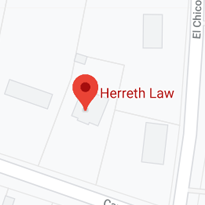One of the great novelty Christmas songs of all time may have involved a negligent Santa Claus who was not up on the housetops where he belonged.
According to the song, Grandma left the house late Christmas Eve, although she had been drinking too much eggnog and had not taken her medication. Concerned family members later found her in the street with “incriminating claus marks” on her back.
Investigators quickly blamed Santa’s runaway sleigh for the tragedy, but is that really what happened?
Evidence in Accident Claims
Many accidents have no eyewitnesses. That’s especially true of hit-and-run claims. So, in these situations, attorneys must look for alternative evidence sources.
The claus/claws marks look bad. Not many other vehicles out there leave those kinds of traces. Then again, everyone knows that Santa goes down chimneys. So, there was no reason for his sleigh to be on the street. Something else, perhaps a cattle stampede, must have left the marks on grandma’s back.
In civil court, the burden of proof is only a preponderance of the evidence (more likely than not). Thats’ the lowest standard of proof in Texas.
Picture two equally-sized stacks of paper side by side. If someone moves one sheet of paper from the left to the right, the stack on the right is higher. That’s a picture of a preponderance of the evidence. If the plaintiff has just a little more proof, the point is established.
That low burden of proof is probably enough to convince a jury that Santa really did run over Grandma, even though there is ample reason to believe otherwise.
Grandma’s Contributory Negligence
Comparative fault, on the other hand, is a different question. This legal doctrine shifts blame for an accident from the tortfeasor (negligent sleigh-driver) to the victim. In this case, the facts are these: Grandma was impaired and not properly medicated. Either one of these things could have made her less alert when crossing the street and less able to dodge a runaway sleigh.
If this case went to court, jurors would have to apportion fault between Grandma and Santa Clause on a percentage basis. The Jolly Old Elf might get some consideration from jurors, but Grandma is, well, Grandma. So, it’s hard to foresee how a fault division would come out.
At any rate, Texas is a modified comparative fault state with a 51 percent bar. So, if the tortfeasor was at least 51 percent responsible for the crash, the tortfeasor is responsible for a proportionate share of damages.
Have a Merry Christmas and look both ways before you cross the street. For a free consultation with an experienced personal injury attorney in Fort Worth, contact Herreth Law. We are available 24/7/365 to meet with accident victims.

